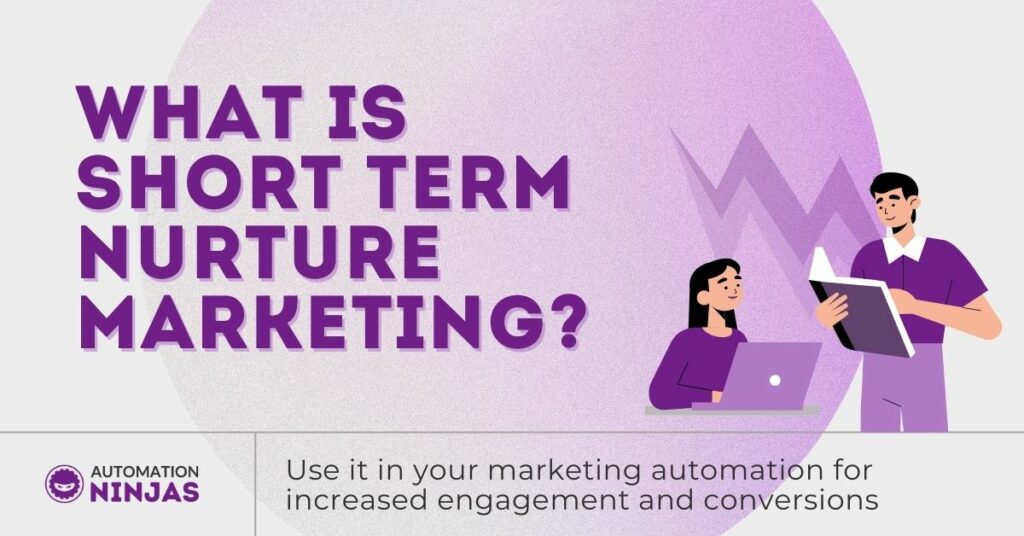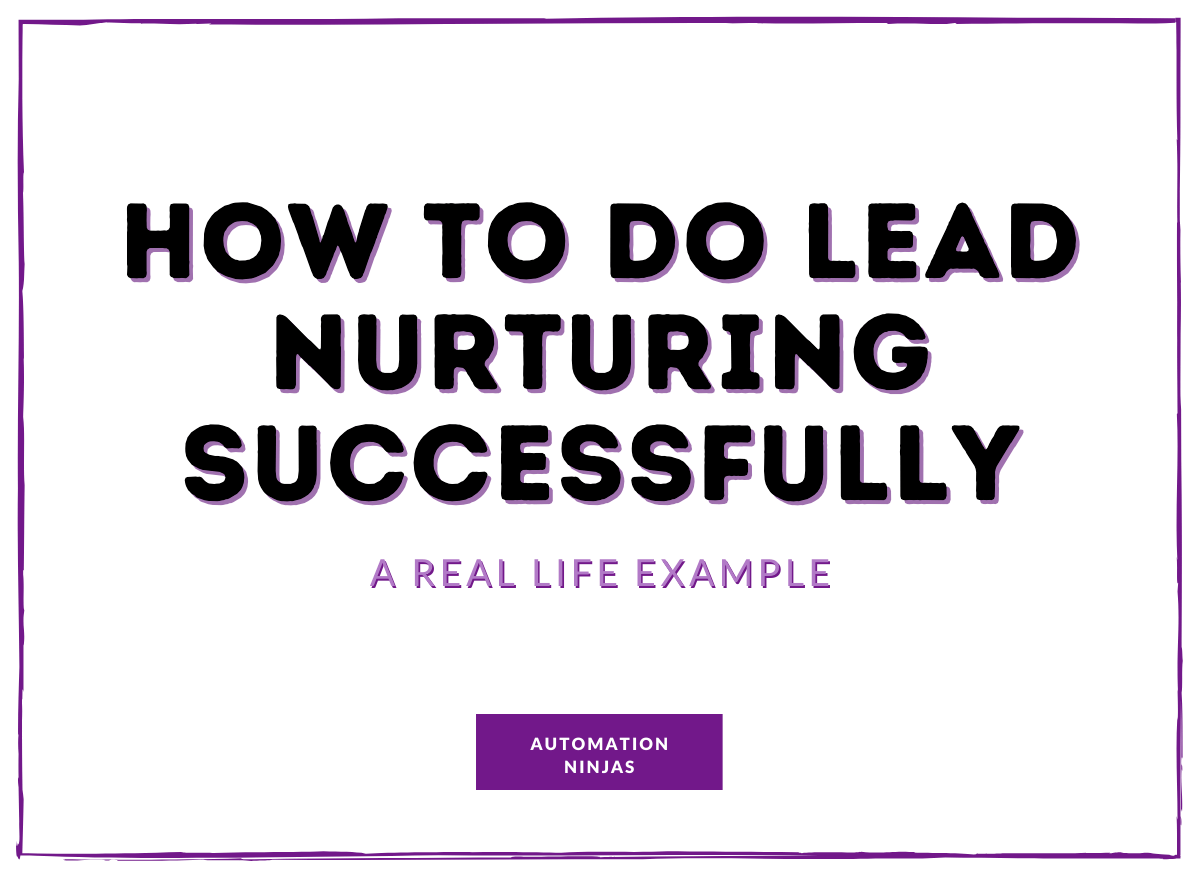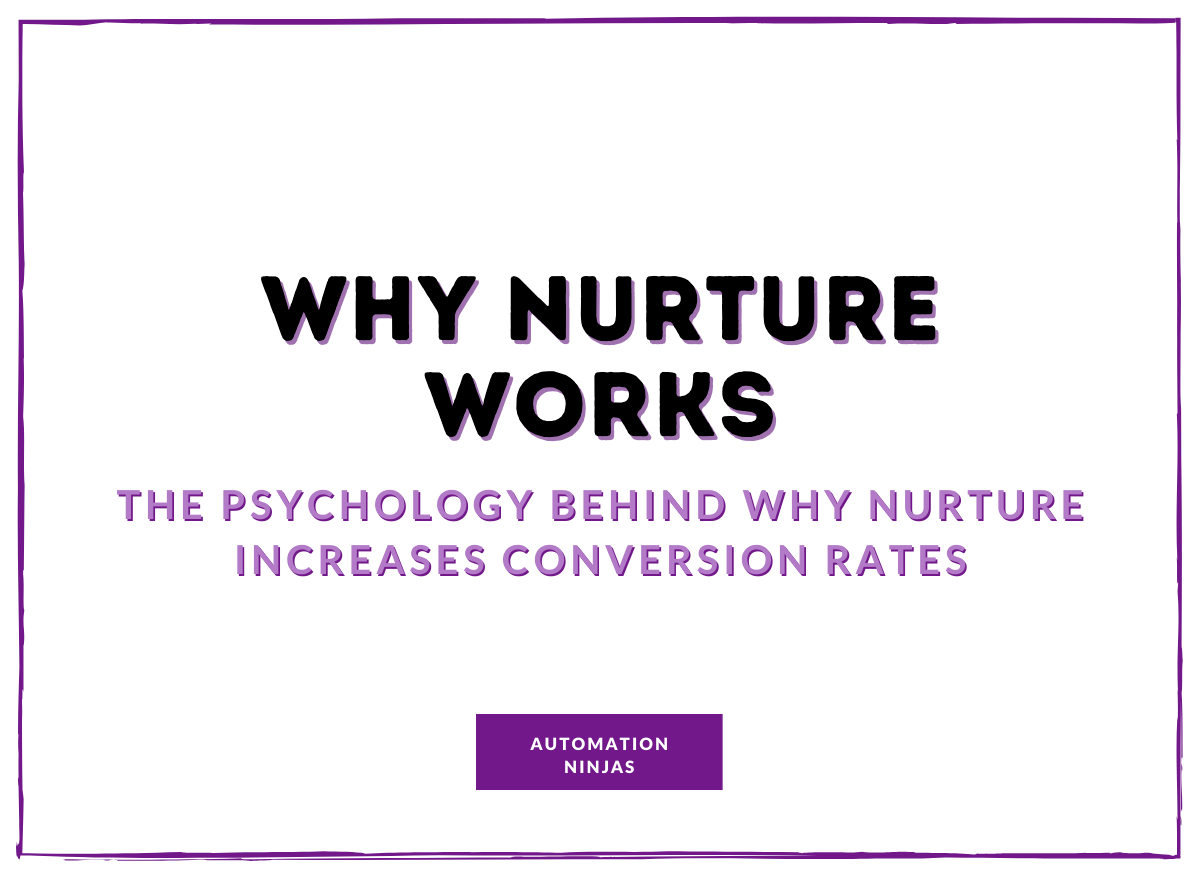Author: Ashton Oldham
Hey there, I'm Ashton, the Content Ninja with a penchant for creativity! I'm all about crafting killer customer-focused content and sprinkling it with that special sauce that makes brands pop. Teaching, strategising, organising (people and projects), and spicing up collaborations? That's my jam!
Nurture marketing is one of the best things your business can do. It is one of the most important elements to include in your customer journey strategy.
Why? Because it’s always focused on the consumer and building a relationship with them. And that’s VERY important.
Nurture campaigns allow you to provide them with what they want and need (and then some!). You're supporting them fully as you take them from being a prospect > a lead > a customer.
If you have marketing automation in place, well it would be criminal not to implement nurture.
Automated lead nurturing is ‘prime real estate’ for any business... Unless you don’t want growth, you like manually emailing your lists, and you’ve got it out for your marketing team.
But that’s not you is it?

There are two types of nurture. Short term & long term.
You could expand this if you want to get reeeeally nitty gritty, but we’re all about keeping it simple 🙂
Both are essentially a form of drip marketing - a continuous flow of little bits of content dripped into inboxes over a period of time.
Why nurture marketing is so effective - buyer psychology
We’ve got a brilliant blog all about strategic content and what the brain needs in order to make a purchase. Check it out here: How to plan strategic content for your marketing automation.
In summary it talks about how the brain perceives the reward of buying a product vs. the cost. This is called the purchase formula.
It came from a really clever experiment, which you can read all about in that blog.
The only way we can influence a purchase decision is by providing content that showcases the high value level of a product.
If a person (or rather their brain) feels a product / service is of high value, and it counteracts the pain they feel when they are told or shown the price. They are more likely to commit to purchase.
Both short term and long term nurture can help to establish just how valuable something is to someone.
In this blog, we are concentrating our attention on the short term. If you want to get more clued up on long term, take a look at What is a long term nurture campaign?
So, what is short term nurture marketing?
You may not have come across the expression ‘short term nurture’ before… though if you are an avid reader of the Ninja Blog Compendium, you most likely would have. This type of nurture marketing is something you do as a short burst of activity to achieve a particular goal.
Short term nurture marketing aims to deliver timely, targeted information via automation emails to help guide a lead or customer through a particular process. It’s also a means of educating the reader and establishing trust and likeability.
A nurture campaign is usually something that kicks off immediately after being triggered by consumer behaviour / action.
For example, you might use a short term nurture campaign to:
- Re-engage contacts - warm up a lead that has turned cold, or a customer who no longer engages with content or buys more products.
- Follow up a lead magnet - where you a) ensure they consume it, and b) continue to educate them around that particular content.
- Follow up in general - they may not have consumed a lead magnet, but interacted with something / asked a particular question. You need to provide that information, with some value added nurture.
- Send post-purchase information - when someone completes a purchase, email them relevant content about their purchase. This can help them to better consume that product / service, adds to the impression they have of your brand, and improves CLV.
Useful resources:
Top 12 ways to re-engage customers | What is a lead magnet? | How to build a lead follow up campaign
A short term nurture campaign is not:
- A welcome campaign - this is something that should be sent to new subscribers when they sign up to your list. From here you can then begin a nurture campaign, based on certain behaviour / actions.
- An onboarding campaign - this is aimed at brand new clients; when someone buys from you for the first time. NB this is different from your welcome emails.
Post-purchase & onboarding need to be managed carefully - you want to onboard a new client as well as getting them relevant info on their purchase. It’s all strategic balance folks.
Useful resources:
What is a welcome email campaign? | Successful customer onboarding strategy
You may have noticed there was no mention of sales in the list above…
That’s because nurturing isn’t about selling. There’s a very clear line that needs to be drawn between the two.
Now, it doesn’t mean to say the content that is used in short term nurture marketing has zero allegiance to your products / services, or your company for that matter. It’s just not a place for cold sales.
You might be surprised to know that just by sending nurture emails you can hugely increase sales…
“Companies that excel at lead nurturing generate 50% more sales-ready leads at a 33% lower cost.” (Marketo).
“Nurtured leads make 47% larger purchases than non-nurtured leads.” (The Annuitas Group).
“79% of marketing leads never convert to sales. Lack of lead nurturing is the common cause for poor performance.” (MarketingSherpa).
So, if you had to pick one over the other, what would you go for: Nurture Emails or Cold Sales Emails?
I know which one I’d choose… Fortunately, we can use both of these together with great success!

For clarity, let’s compare: Short Term Nurture vs Long Term Nurture
It’s pretty clear in the naming that one covers a shorter period of time (term) and the other, a longer period. But that’s not where the differences end. Take a look at the comparison table below:
Short Term Nurture | Long Term Nurture |
|---|---|
Triggered to send immediately after an action | Triggered to send on a regular basis |
Drip fed for a short time only | Drip fed continually over a long period of time |
Aims to achieve a particular goal/result | Aims to keep engagement up and provide value |
Based on something very specific | Based around a more general (relevant) topic |
Gets sent to a targeted audience | Gets sent to everyone in your list |
Feeds into sales improving conversions, improves segmentation and profiling, benefits email deliverability & increases customer lifetime value. | |
Best practices for your short term nurture marketing
When it comes to creating a short term nurture campaign, there are some very important guidelines you should follow.
We always recommended that you stick to the structures and strategies that have been tried and tested with proven success. Not only will this make the job of creating a campaign easier, it should also put you in a better place to achieve the results you’re after.
Decide on the goal of your campaign
If you don’t determine an overall goal, it will be harder to create your campaign flow. Each email will play a specific role in achieving that goal.
Get clear on your target audience
You need to have a good understanding of buyer personas in order to create relevant content for your audience. Think about what your ideal customers look like - their interests, values, pain points and goals.
Think about your customer journey
If you don’t have one yet, mapping out your customer journey is a really important step. We’d suggest doing this before you go any further, it will give you so much clarity.
PS. We can help you with this if you’re stuck. Find out more here: Ninja Customer Journey Session
Once you have this in place, you’ll want to target relevant to where the audience is in the customer journey AND their awareness stage. FYI the awareness often reflects where they are on the journey.
Find out more about awareness levels here: What is awareness and why does it matter?
Create great quality, high value & relevant content
Your aim is to educate. You need to be informative, tell them something they need to know, want to learn about and convey it in as interesting and appealing a way as possible.
It should be digestible, clear and reader-friendly. Also think about how they are reading the content - are they consuming on mobile? Then make sure it’s presentable in that format.
Segmentation & tagging
Define your contacts into clear demographics and psychographics so you can ensure content is as relevant as possible.
Use tags not only to trigger sending emails, but to group your contacts according to their interests, behaviours and actions, and what you might know about them personally.
Personalise your emails
We all like a personal touch. It makes a huge difference if you send your emails from a human (i.e. Sandy@azcompany, rather than Mail@azcompany). Plus, starting your email off with Dear Alison, or better yet Hi Alison (nice and friendly) instead of ‘Reader’ or nothing at all.
Of course this requires you having the contact data to input. Not asking for first names in your signup forms? I’d suggest amending that quick stat!
Get your automation flow nailed
You’ll be utilising the dreamboat that is marketing automation to deliver your nurture campaigns. So it’s really important that you put the effort into building a campaign flow that works really well.
You need to think about all the different actions that can take place in and around your campaign and make sure everything links up nicely.

Go get ‘em (your list) with some awesome nurture marketing
Now you know what short term marketing is (and is not), your next step is to start implementing this type of nurture in your marketing automation.
So where do you start? Let’s recap what your options are and go from there…
You can use short term nurture to:
- Re-engage contacts
- Follow up a lead magnet
- Follow up in general
- Send post-purchase information
Have a think about what you have in place at the moment. Are you driving traffic to a lead magnet but not following up? If yes, then definitely focus on getting these emails in place.
Perhaps you’ve got lots of people buying and then leaving them to their own devices with your products. Do you find you don’t get much positive post-purchase feedback? Perhaps your customer service team is answering calls about how to use the product or service? Maybe, customers just aren’t returning to buy more from you….
Your post-purchase nurture could make a huge difference here and really help to position your brand.
Email engagement at an all time low? Review the type of emails you’re sending and introduce some specific targeted messaging to get people back on board!
Don’t get overwhelmed, just take it one stage at a time.
And if you’d like some support in getting started, just reach out. We can help you find the most important focus for your business. What will make the most immediate impact, and how we can set you up for continued success in the other areas. Get in touch!




